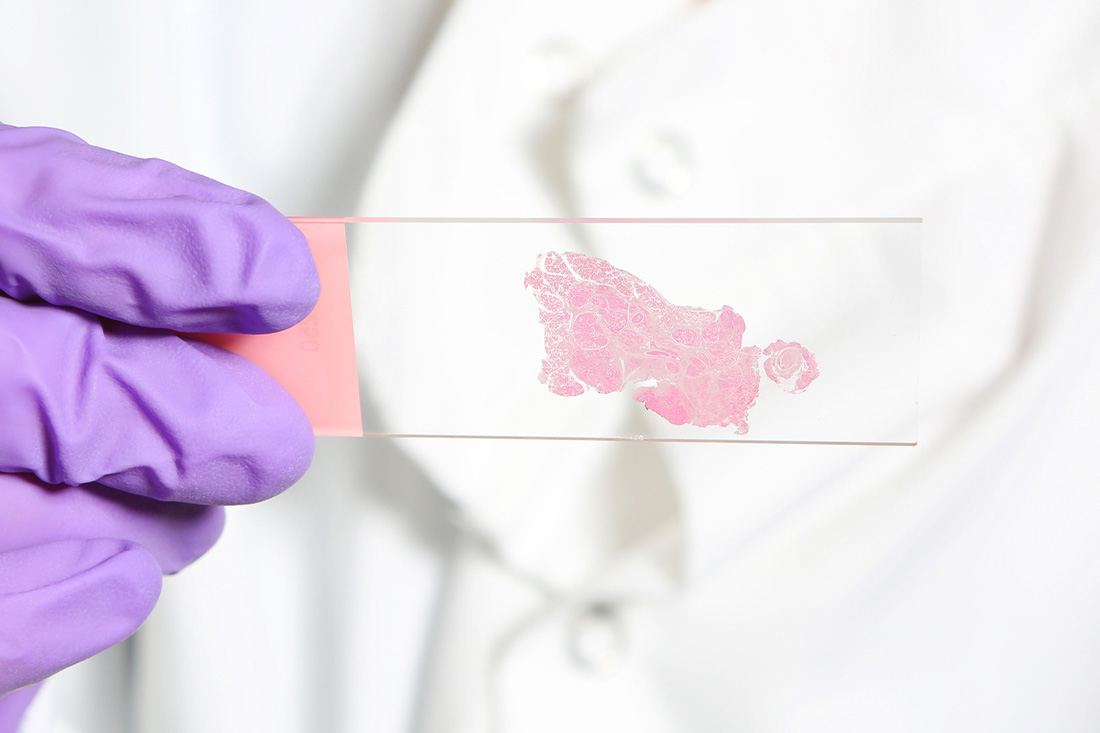Cancer cell–immune cell interactions predict immunotherapy response
UT Southwestern-led study produces new tool for cancer-fighting precision medicine

DALLAS – April 29, 2024 – By examining which genes were turned on and off in a mix of cell types from breast cancer biopsies, a team led by UT Southwestern Medical Center researchers developed a tool that can accurately predict which patients with breast cancer will respond to immunotherapies. Their findings, reported in Cell Reports Medicine, could offer a new way to perform precision medicine, which directs the most effective therapies to individual patients.
“Immunotherapies have made incredible strides in extending survival for cancer patients, but they only work about 20% of the time. To make immunotherapies more beneficial, we need to have a much better understanding of the cellular composition of specific tumors and how those cells interact with each other,” said Isaac Chan, M.D., Ph.D., Assistant Professor of Internal Medicine and Molecular Biology and in the Harold C. Simmons Comprehensive Cancer Center at UT Southwestern.

Dr. Chan explained that over the past several decades, researchers have had a growing understanding that malignant tumors aren’t just made of cancer cells but have a variety of cell types, including immune cells that can either hinder or help tumors thrive. Existing immunotherapies take advantage of this phenomenon by stimulating T cells present in and around tumors to attack cancer cells.
However, T cells aren’t the only cancer-fighting cells present in tumors that change after interacting with cancer cells, Dr. Chan noted. Natural killer (NK) cells, part of the innate immune system, can also help fight cancer. But the Chan Lab and others have shown that interactions between cancer cells and NK cells can exhaust or even reprogram – or corrupt – NK cells to promote tumors instead of killing them. Dr. Chan and his team were able to identify these reprogrammed NK cells in breast tumors in previous research. Patients who had high levels of reprogrammed NK cells had worse outcomes, suggesting the potential for therapeutically targeting these cells.
To better understand how cancer cells interact with immune cells, Dr. Chan and his colleagues took advantage of a method called single cell RNA sequencing (scRNA-seq), which evaluates gene expression in each individual cell. By combining several publicly available scRNA-seq databases, they created a new dataset that included 119 tumor samples from 88 breast cancer patients. Using this larger database, the researchers were able to analyze data from 236,363 cells, far more than any breast cancer scRNA-seq analysis thus far.
Using a computational technique, the team grouped together cancer cells in which similar sets of genes were turned on or off and found there were actually 10 categories of breast cancer cells. Just three categories of breast cancer cells (hormone positive, HER2 positive, and triple negative) are typically used to determine appropriate therapy. The distribution of the 10 categories of cancer cells varied among tumors; nearly all tumors had a mix of different subtypes, Dr. Chan said.
By analyzing which immune cells appeared to interact with categories of cancer cells based on this gene expression, the researchers used outcomes data to show that patients with certain combinations of subtypes had worse outcomes than others. This analysis also offered insight on the important clinical cancer cell interactions with other immune cell types – a finding that Dr. Chan and his colleagues leveraged to create a tool they named InteractPrint. Demonstrating its value, InteractPrint accurately predicted the response to immunotherapy in a large, ongoing clinical trial testing immunotherapy in breast cancer patients.
Dr. Chan noted that this approach – evaluating interactions between cancer and immune cells through their gene expression – could assess the likelihood of response to different immunotherapies across a wide variety of cancer types, helping doctors choose patients for whom this treatment will be the most successful.
Other UTSW researchers who contributed to this study include first authors Lily Xu, a medical student, Shao-Po Huang, a Medical Scientist Training Program student and Perot Family Scholar, and Kaitlyn Saunders, former UT Dallas graduate student researcher who worked in the Chan Lab; Heather McArthur, M.D., M.P.H., Associate Professor of Internal Medicine and Clinical Director of the Breast Cancer Program in the Simmons Cancer Center; Sangeetha M. Reddy, M.D., Assistant Professor of Internal Medicine and in the Simmons Cancer Center; Lin Xu, Ph.D., Assistant Professor in the Peter O’Donnell Jr. School of Public Health, of Pediatrics, and in the Simmons Cancer Center; Kenian Chen, Ph.D., Computational Biologist; and graduate student researchers Kenneth Martinez Algarin and Isabella Terrazas.
This study was supported by funding from METAvivor, Susan G. Komen (CCR231010879), the National Institutes of Health (1K08CA270188-01A1), the Peter Carlson Trust, Theresa’s Research Foundation, and a National Cancer Institute Cancer Center Support Grant (P30 CA142543).
About UT Southwestern Medical Center
UT Southwestern, one of the nation’s premier academic medical centers, integrates pioneering biomedical research with exceptional clinical care and education. The institution’s faculty members have received six Nobel Prizes and include 25 members of the National Academy of Sciences, 21 members of the National Academy of Medicine, and 13 Howard Hughes Medical Institute Investigators. The full-time faculty of more than 3,100 is responsible for groundbreaking medical advances and is committed to translating science-driven research quickly to new clinical treatments. UT Southwestern physicians provide care in more than 80 specialties to more than 120,000 hospitalized patients, more than 360,000 emergency room cases, and oversee nearly 5 million outpatient visits a year.
